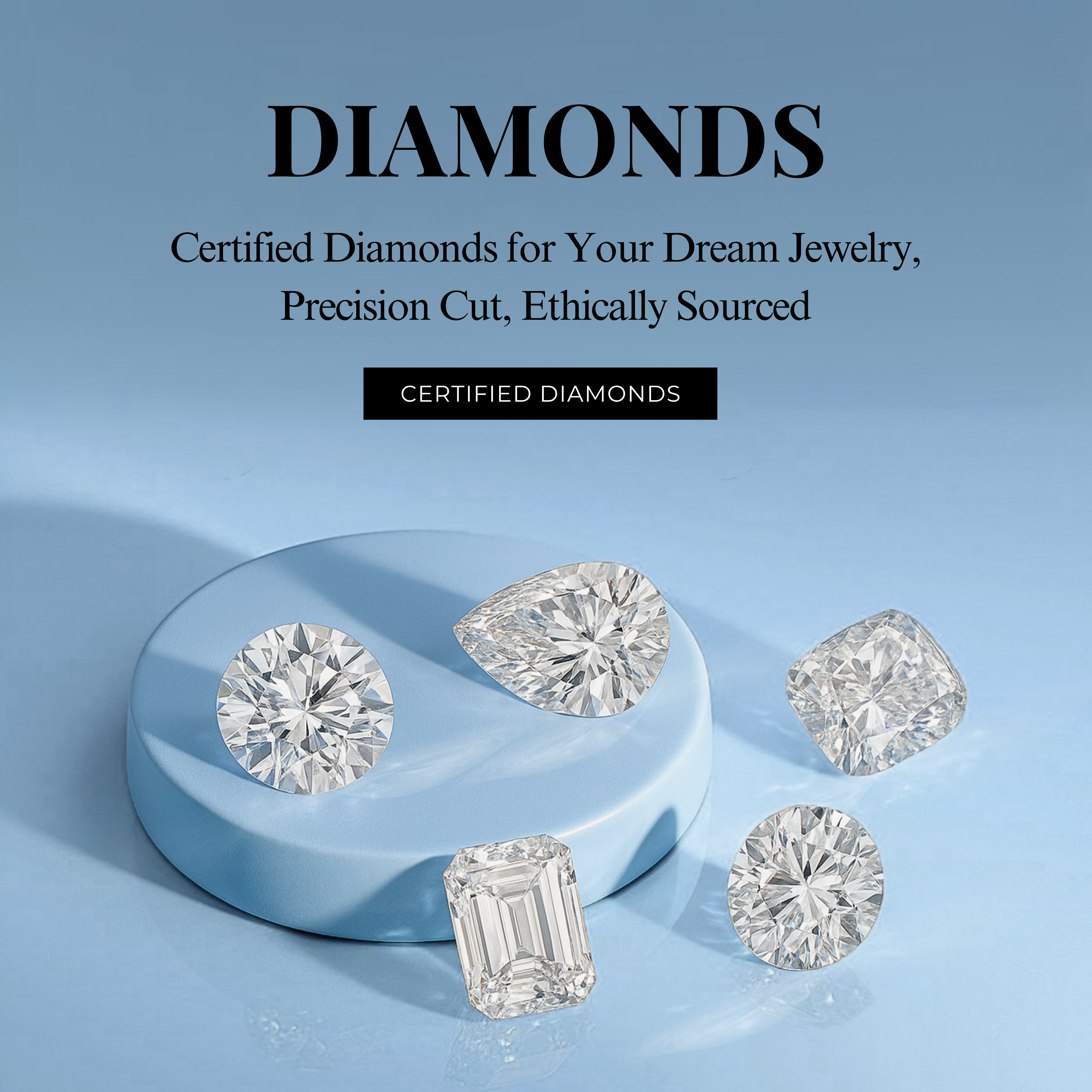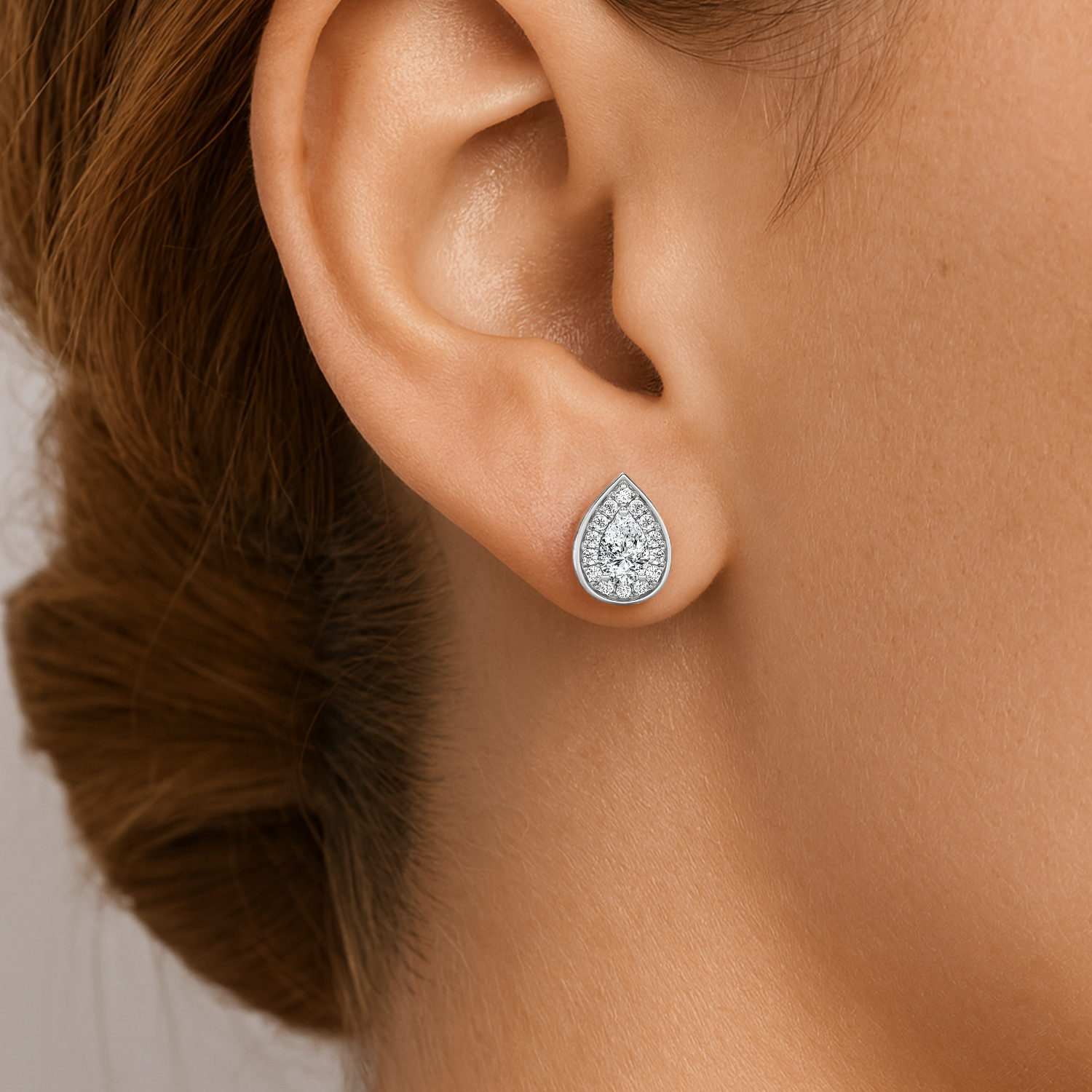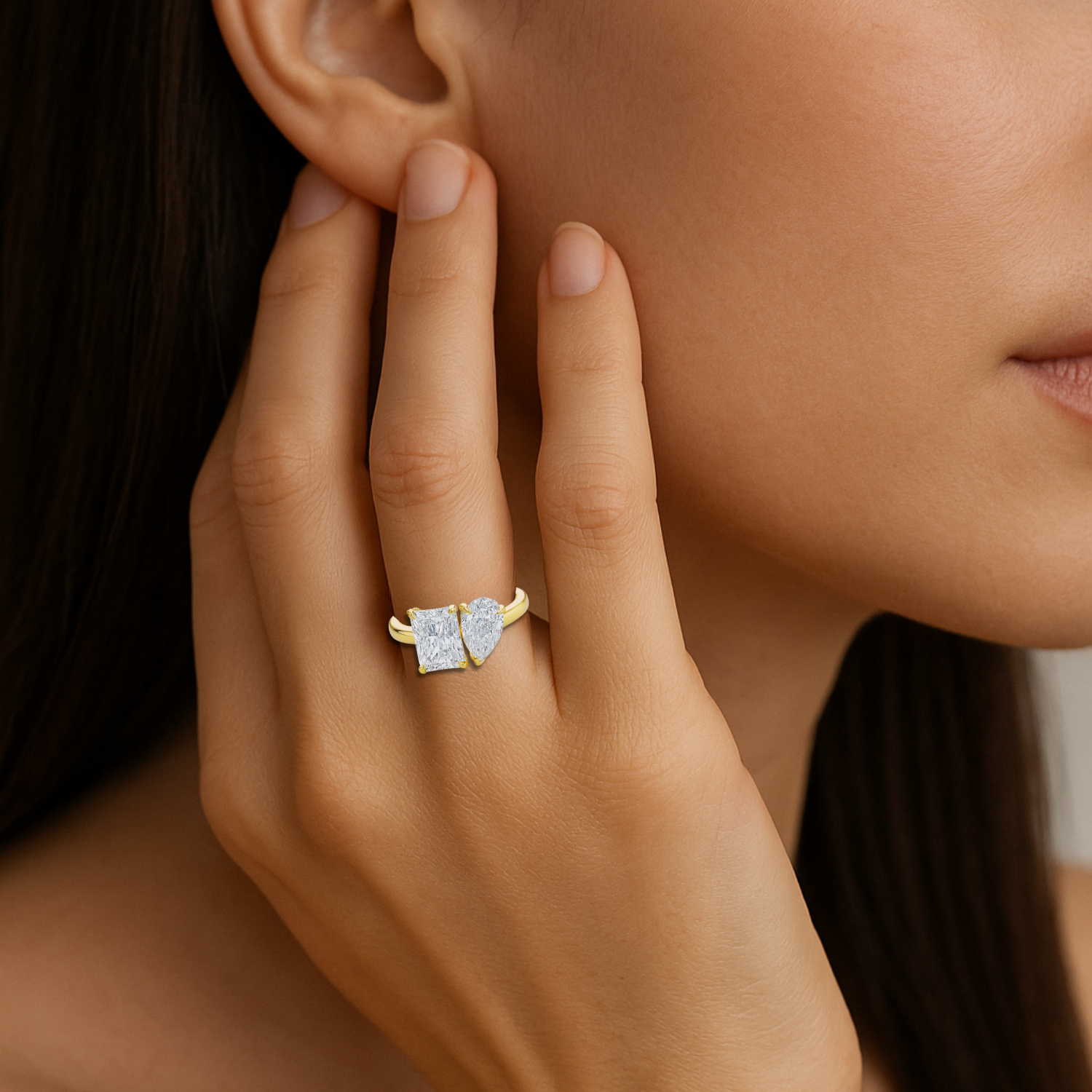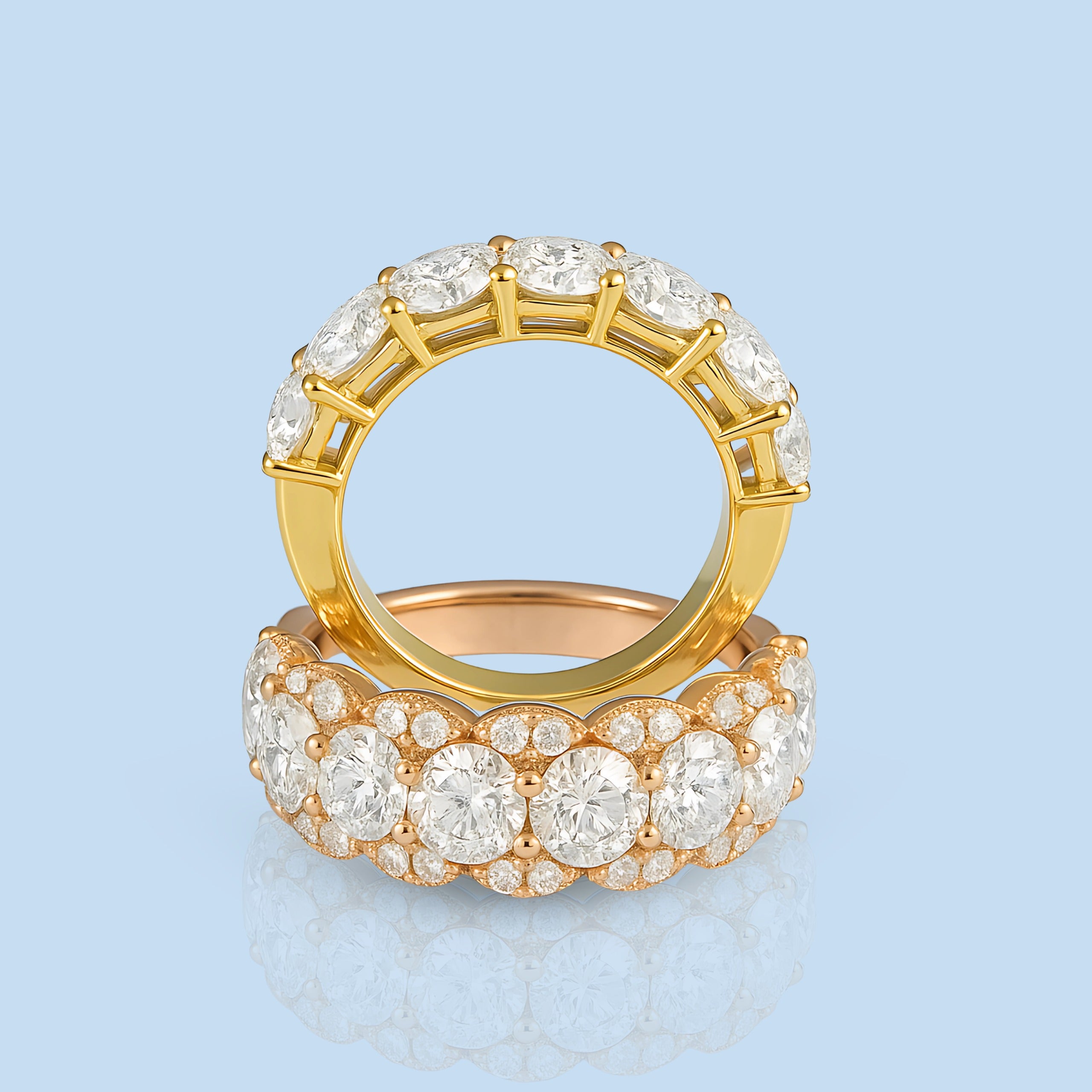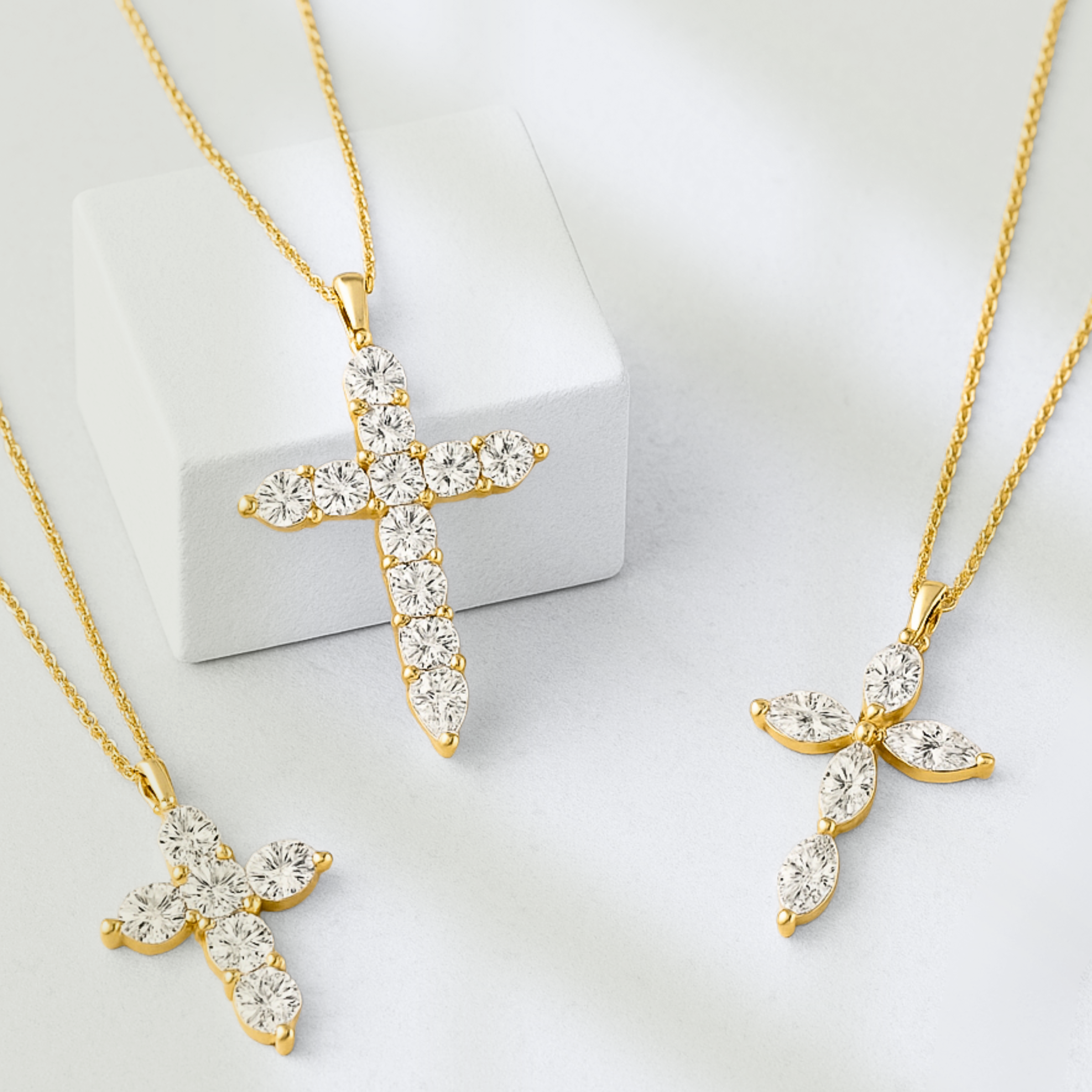
Lab-Grown and Natural Diamonds: Quality, Value & Sustainability 2026
Diamonds have long stood as symbols of love, luxury, and eternity. In recent years, particularly moving into 2026, consumers have paid increasing attention to the ongoing debate regarding diamonds. Technology has made it easier to seek out value-driven solutions, ethical origins, and transparent practices. This guide will help you explore the key advantages, similarities, and distinct qualities between lab-grown and natural diamonds, so you can choose with confidence and clarity.
What Are Lab-Grown Diamonds?
Lab-created diamonds are produced in highly controlled laboratory environments, typically over a span of a few weeks. Advanced processes such as Chemical Vapor Deposition (CVD) and High Pressure High Temperature (HPHT) are used to replicate the natural growth conditions found deep within the earth. The outcome is a gem that is identical in appearance, chemical makeup, and physical structure to stones that come directly from the ground.
Although made in a lab, these stones exhibit the same brilliance, fire, and durability as those from nature. They display the classic features people admire, making them sought-after for various jewelry choices.
Difference Between Lab-Grown and Natural Diamonds

To the unaided eye, lab-grown and natural diamonds are visually indistinguishable. Only trained professionals using specialized equipment can notice minor inclusions or internal growth patterns that are unique to each type. Many lab-created diamonds have discreet laser inscriptions to aid with identification and ensure authenticity. Certification remains critical—always check for grading reports confirming the source and quality before purchasing.
Assessing Quality: The Grading Process
Reputable laboratories, including GIA and IGI, utilize the universally accepted 4Cs—Cut, Color, Clarity, and Carat weight—to grade all diamonds. The grading standards remain the same regardless of the diamond’s formation method. As a result, transparency in quality and features is consistent throughout the industry.
For instance:
-
Durability: Both rank 10 out of 10 on the Mohs scale, ensuring impressive resilience.
-
Brilliance: Both reflect and refract light efficiently, producing exceptional sparkle.
-
Color and Clarity: Diamonds of both types come in a broad range of grades and even rare colors.
Subscribe to our newsletter for quick updates on our blogs!
Price and Value
Lab-created stones are generally about 30–50% more budget-friendly than their earth-mined counterparts of similar quality and size. Technological advancements and increased production efficiency contribute to this price advantage, widening access for many buyers. This allows you to select larger carat sizes or better quality stones within your existing budget.
Market value and resale remain considerations. Because of their rarity, mined diamonds tend to retain value longer, though the price gap is narrowing as acceptance of lab-made options grows around the world.
Environmental and Ethical Considerations
Modern buyers often seek eco-friendly and ethical sourcing. Lab-created diamonds sidestep many of the environmental challenges associated with mining, such as deforestation, heavy water usage, and soil damage. This greatly reduces their ecological footprint. Conflict-free sourcing is inherently assured, aligning with current ethical standards and frameworks.
For mined gems, blockchain solutions and the Kimberley Process work to create transparent, conflict-free supply chains. However, lab-created stones provide guaranteed traceability and lesser environmental harm, making them attractive to responsibly minded consumers.
Certification and Authenticity Assured
All reputable grading labs issue formal certificates to verify diamond identity, quality (4Cs), and whether the stone is grown or mined. This documentation protects buyers, ensuring both authenticity and long-term value. Insist on receiving a certificate with your purchase, and verify the laser inscription for added confirmation.

Distinct Benefits of Lab-Grown Diamonds
-
Eco-friendliness: Lab-created stones have a minimal impact on the planet.
-
Affordability: Lower prices for comparable or better quality gems.
-
Ethical Confidence: Eliminates concerns around conflict or human right violations in sourcing.
-
Diverse Choices: Easily available in striking hues such as pink or yellow.
-
Modern Impression: Favors those prioritizing innovation and social responsibility.
Also Read: GIA vs IGI: Why Diamond Certification Matters for Lab-Grown Diamonds in 2026
Why Still Choose Natural Stones?
Although new technological methods are on the rise, naturally occurring stones continue to charm many. Their origin story—formed deep within the earth over unimaginable periods of time—imbues them with distinctive value.
-
Rarity: Mined diamonds' scarcity enhances both allure and worth.
-
Investment: These gems tend to preserve market value better over long periods.
-
Romantic Appeal: Celebrate a connection to the earth and timeless tradition.
Making the Right Choice: Lab-Grown and Natural Diamonds
Choosing between both the Diamonds depends on your preferences, purpose, and values. Whether you are drawn to the affordability, sustainability, and modern edge of lab-created stones or the rarity and history associated with mined gems, both options provide lasting beauty. Each reflects elegance and significance, so select the diamond that truly aligns with your ideals.
Shop with Assurance at Fine Diamond
At Fine Diamond, discover a curated assortment of lab-grown and natural diamonds. Each stone includes comprehensive certification, validating its source, authenticity, and ethical standards. Shop confidently, knowing your selection represents a commitment to quality and ethics as you embrace life’s special moments.


 Round
Round  Marquise
Marquise  Asscher
Asscher  Princess
Princess  Cushion
Cushion  Pear
Pear  Heart
Heart  Emerald
Emerald  Oval
Oval  Radiant
Radiant 